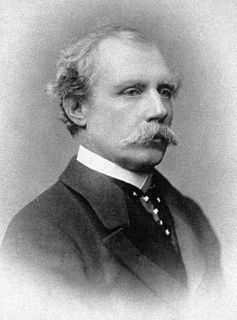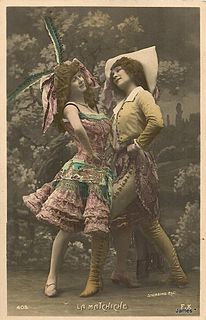
Charles Brooke, Rajah of Sarawak, GCMG, born Charles Anthoni Johnson, ruled as the head of state of Raj of Sarawak from 3 August 1868 until his death. He succeeded his uncle, James Brooke, as the second White Rajah of this small country on the coast of Borneo.

Bidayuh is the collective name for several indigenous groups found in southern Sarawak, Malaysia and northern West Kalimantan, Indonesia, on the island of Borneo, that are broadly similar in language and culture. The name Bidayuh means 'inhabitants of land'. Originally from the western part of Borneo, the collective name Land Dayak was first used during the period of Rajah James Brooke, the White Rajah of Sarawak. At times they were also lesser referred to as Klemantan people. They constitute one of the main indigenous groups in Sarawak and West Kalimantan and live in towns and villages around Kuching and Samarahan in the Malaysian state of Sarawak, while in the Indonesian province of West Kalimantan they are mainly concentrated in the northern Sanggau Regency. In Sarawak, most of Bidayuh population are found within 40 km of the geographical area known as Greater Kuching, within the Kuching and Samarahan division. They are the second largest Dayak ethnic group in Sarawak after the Iban and one of the major Dayak tribes in West Kalimantan.

The Royal Ranger Regiment is an infantry regiment of the Malaysian Army. Although it is second in seniority to the Royal Malay Regiment, the RRD can trace its origins back to the mid 19th century and the establishment of The Sarawak Rangers, the peacekeeping force in the Sarawak region. This force was absorbed by the Sarawak Constabulary in 1932, but the name was revived in 1941 as a British Colonial unit; this unit commanded by British Lieutenant Colonel C.M. Lane was captured by the Japanese in 1942.

Kuching Division is one of the twelve administrative divisions in Sarawak, Malaysia. Formerly part of what was called the "First Division", it is the center and the starting point of modern Sarawak. Kuching Division has a total area of 4,559.5 square kilometres.

The maxixe, occasionally known as the Brazilian tango, is a dance, with its accompanying music, that originated in the Brazilian city of Rio de Janeiro in 1868, at about the same time as the tango was developing in neighbouring Argentina and Uruguay. It is a dance developed from Afro-Brazilian dances and from European dances.

Lundu is a town located in the northwest of Kuching Division of Sarawak, Malaysia, and borders the Indonesian Province of West Kalimantan.

Mount Pueh, also known as Mount Pueh-Berumput, Mount Poi and Mount Poe, is a mountain located near Lundu, Sarawak on the Malaysia-Indonesia border. Mount Pueh was known to biologists for the collections made there by Eric Mjöberg (1882–1938), a Swedish naturalist, who was Curator of the Sarawak Museum between 1922–1924. Mjöberg's herpetological collections from Gunung Pueh between October to December 1923, and other localities in Borneo, were reported by Smith (1925). Mjöberg, unfortunately, left little by way of written records, of his ascent of Pueh and the collections he made.
Selako, also known as Salako, Silakau, Selakau, Selako Dayaks, Bidayuh Selako, Kata Diri' or Damea is an indigenous Dayak ethnic group that lives in the westernmost part of Borneo island. In Indonesia, they are found in districts such as Tujuhbelas, Samalantan, Paloh, Tebas, Telukkeramat and Sejangkung of Sambas Regency, and Bengkayang Regency, West Kalimantan. While in Malaysia, most Selakos are settled in areas such as Sematan settlement in Lundu, Sarawak. They are classified as part of the Bidayuh tribe linguistically and geographically. They speak Selako language, which is a branch of Malayic languages instead of Bornean or Land Dayak like most Dayaks, besides Selako they also speak Malaysian and Sarawak Malay in Malaysia and Indonesian in Indonesia. Many Selakos are Christians, they are mostly Anglicans, Bornean Evangelicals and Roman Catholics following missionary work in the 19th century.

Calanolide A is an experimental non-nucleoside reverse transcriptase inhibitor (NNRTI). This compound was extracted from the Calophyllum lanigerum, of variety austrocoriaceum, trees in Lundu, Malaysian state of Sarawak in 1992 by United States National Cancer Institute (NCI). Due to rarity of the raw materials and low yield of the active ingredient, total synthesis of the compound was devised in 1996. For the same reason, its sister compound (-)-Calanolide B have been tauted as replacement. As a result of the discovery of Calanolide A, Sarawak Medichem pharmaceuticals company was established as a joint venture between US-based MediChem Research Inc and Sarawak state government. In 2006, Craun Research, a company established by Sarawak government, acquired Sarawak MediChem. In 2016, Craun Research announced the completion of Phase I clinical trials for Calanolide A.
The Matang Highway is an expressway located in the Malaysian state of Sarawak, on the island of Borneo. Construction commenced in July 2002 and was targeted for completion by December 2008. The construction cost about 201,000,000 Ringgit. As of 2010, the highway provides a direct route from Kuching to Lundu.
Jalan Lundu–Sematan is a major highway in Kuching Division in Sarawak, Malaysia. This highway is also part of the Pan Borneo Highway network.
Jalan Bau–Lundu is a major highway in Kuching Division in Sarawak, Malaysia. This highway is also part of the Pan Borneo Highway network.

Biawak is a settlement in Lundu District, Sarawak, Malaysia. It lies approximately 70.6 kilometres (44 mi) west of the state capital Kuching, very close to the border with Indonesian Kalimantan.

Kampung Munti is a settlement in the Lundu division of Sarawak, Malaysia. It lies approximately 54.3 kilometres (34 mi) west of the state capital Kuching.
Jagoi, Singai or Bau, is a Dayak language of Borneo. Gumbang dialect may be closer to Tringgus.

Sematan is a settlement in the Lundu district of Sarawak, Malaysia. It lies approximately 67.5 kilometres (42 mi) west-north-west of the state capital Kuching.

This is a list of the members of the Dewan Rakyat of the 3rd Parliament of Malaysia, elected in 1969. From 1969 to 1971, the National Operations Council governed the country in lieu of the elected government. In 1971, the NOC was dissolved with the restoration of Third Parliament of Malaysia.
Tanjong Datu is a state constituency in Sarawak, Malaysia, that has been represented in the Sarawak State Legislative Assembly since 1991.
Santubong is a federal constituency in Sarawak, Malaysia, that has been represented in the Dewan Rakyat since 1971.









